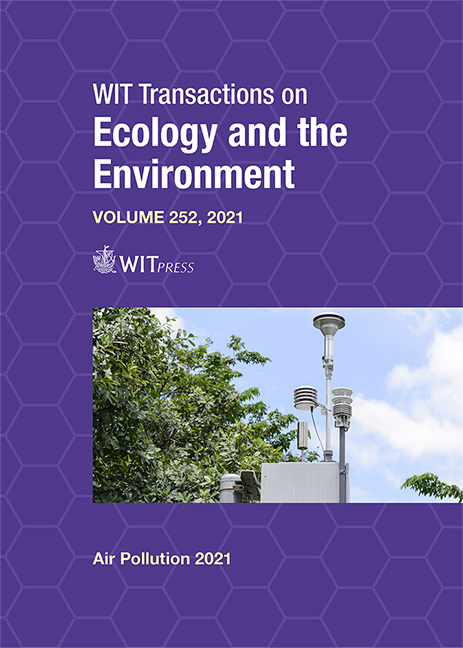HEALTH IMPACTS OF PM2.5 AND NO2 SHIP-RELATED AIR POLLUTION IN MATOSINHOS MUNICIPALITY, PORTUGAL
Price
Free (open access)
Transaction
Volume
252
Pages
8
Page Range
223 - 230
Published
2021
Paper DOI
10.2495/AIR210201
Copyright
Author(s)
RAFAEL A. O. NUNES, MARIA C. M. ALVIM-FERRAZ, FERNANDO G. MARTINS, JUKKA-PEKKA JALKANEN, ELISA MAJAMÄKI, SOFIA I. V. SOUSA
Abstract
Air pollution is considered the most significant environmental risk to health, causing substantial economic consequences. International maritime traffic has been identified as a major air pollution source, emitting nitrogen oxides (NOx), sulphur oxides (SOx) and particulate matter (PM). Thus, this work aimed to study the local health impacts of PM2.5 and NO2 ship-related air pollution in Matosinhos municipality, where Leixões port is located (one of the major ports in Portugal), in 2014. Hourly shipping emissions were obtained using STEAM model with a resolution of 250 × 250 m for a 50 × 50 km domain. The contributions of PM2.5 and NO2 concentrations in Matosinhos were modelled using the AERMOD model. The annual mean background concentrations of PM2.5 and NO2 were acquired from the fixed monitoring stations of the QualAr network. Log-linear functions based on WHOHRAPIE relative risks (RR) for PM2.5 and NO2 all-cause natural mortality were used to calculate the excess of premature deaths. The costs associated with the health impacts were estimated as the product of the additional premature deaths and the value of statistical life (VSL). It was estimated that shipping emissions caused 15 additional deaths (95% CI 19–21), corresponding to 29 million € (95% CI 17–40) for the Matosinhos municipality in 2014. These results show that shipping emissions are an environmental concern that affects the Matosinhos municipality population.
Keywords
local impacts, shipping emissions, atmospheric modelling, health effects, monetary valuation





